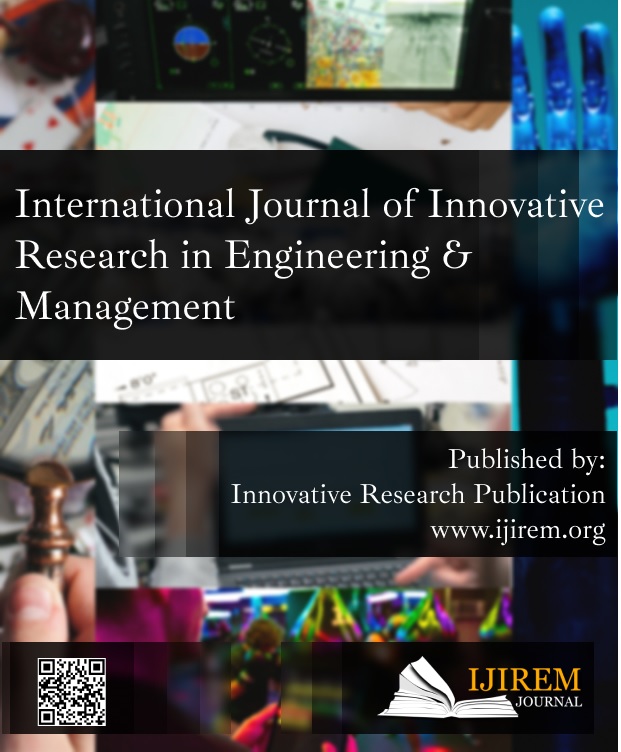Factors of Workplace Happiness: A Systematic Literature Review
Keywords:
Happiness, Human, Organization, Responsibilities, WorkplaceAbstract
Happiness, defined as pleasurable feelings and sensations, well-being, and good attitudes, has gotten a lot of interest in psychological studies recently. The pursuit of joy has spilled over into the job. This study summarizes what is recognized more about definitions, origins, and effects of workplace pleasure, as well as ideas from the growing favourable psychological research on pleasure in general. Many distinct term organisational components, in my opinion, are part of a wider family of pleasure concepts that have certain similar origins and outcomes. Job fulfilment is a part of happiness at profession, but it's not the whole story. Professional engagement, work performance, and emotional corporate citizenship behavior may indeed be included in a complete assessment of personal joy. At numerous layers, encompassing ephemeral emotions, permanent character views, and communal behaviours, and with regard to different emphases, such as particular units, the work, and the organisation, components of pleasure have been (and should be) conceived and quantified. There is information that pleasure has significant repercussions for both people and institutions at all levels. Previous studies has been able to undervalue the relevance of workplace enjoyment.
Downloads
References
S. Sirisunhirun and N. S. Dhirathi, “Job characteristics and a Happy Workplace: Increasing Organisational Engagement in Thai Higher Education Institutions.,” Organ. Dev. J., 2015.
K. Bakos, “Happy Workplace?,” Eur. J. Ment. Heal., 2017, doi: 10.5708/ejmh.12.2017.1.rev.2.
D. Thummakul et al., “THE DEVELOPMENT OF HAPPY WORKPLACE INDEX,” Int. J. Bus. Manag. Stud., 2012.
T. Sudsakorn, “Management Factors Influencing the Management of the Happy Workplace for Police Stations in Thailand,” SSRN Electron. J., 2019, doi: 10.2139/ssrn.3398174.
A. Kumar and S. Kapoor, “Engaged and Happy Workplace: A Learning and Development Approach.,” Amity Glob. Bus. Rev., 2019.
R. Peccei, “Human Resource Management and the Search for the Happy Workplace,” Inaug. Address to Rotating Chair Res. Organ. Manag. Fac. Econ., 2004.
B. Pal, “What makes up happy workplaces?,” Acad. An Int. Multidiscip. Res. J., 2019, doi: 10.5958/2249- 7137.2019.00090.9.
B. Phrapratanporn, P. Wararatchai, W. Aunyawong, and N. R. N. A. Rashid, “Enhancing supply chain performance of SMEs in Thailand using the integrated personnel development model,” Int. J. Supply Chain Manag., 2019.
W. M. Yap and S. K. Z. Badri, “What makes millennials happy in their workplace?,” Asian Acad. Manag. J., 2020, doi: 10.21315/AAMJ2020.25.1.6.
P. Sadangharn and P. Worrakulrattana, “The System of Happy Workplace Organizations: The Case of the Excellent Award Organizations in the Eastern Thai Context.,” Proc. Multidiscip. Acad. Conf., 2016.
J. L. S. Munar, S. De Juana‐Espinosa, L. Martínez‐ buelvas, Y. V. Abarca, and J. O. Tirado, “Organizational happiness dimensions as a contribution to sustainable development goals: A prospective study in higher education institutions in Chile, Colombia and Spain,” Sustain., 2020, doi: 10.3390/su122410502.
A. P. Avnish Sharma, “Ethnocentrism: Enemy of Productive and Happy Multicultural Workplace,” Turkish J. Comput. Math. Educ., 2021, doi: 10.17762/turcomat.v12i5.1481.
K. Jermsittiparsert, “Chapter 8. Effect of Happy 8 Workplace and Corporate Social Responsibility on Success of Small and Medium Enterprises in Thailand during Covid-19,” in Emerging Trends in and Strategies for Industry 4.0 During and Beyond Covid-19, 2021.
